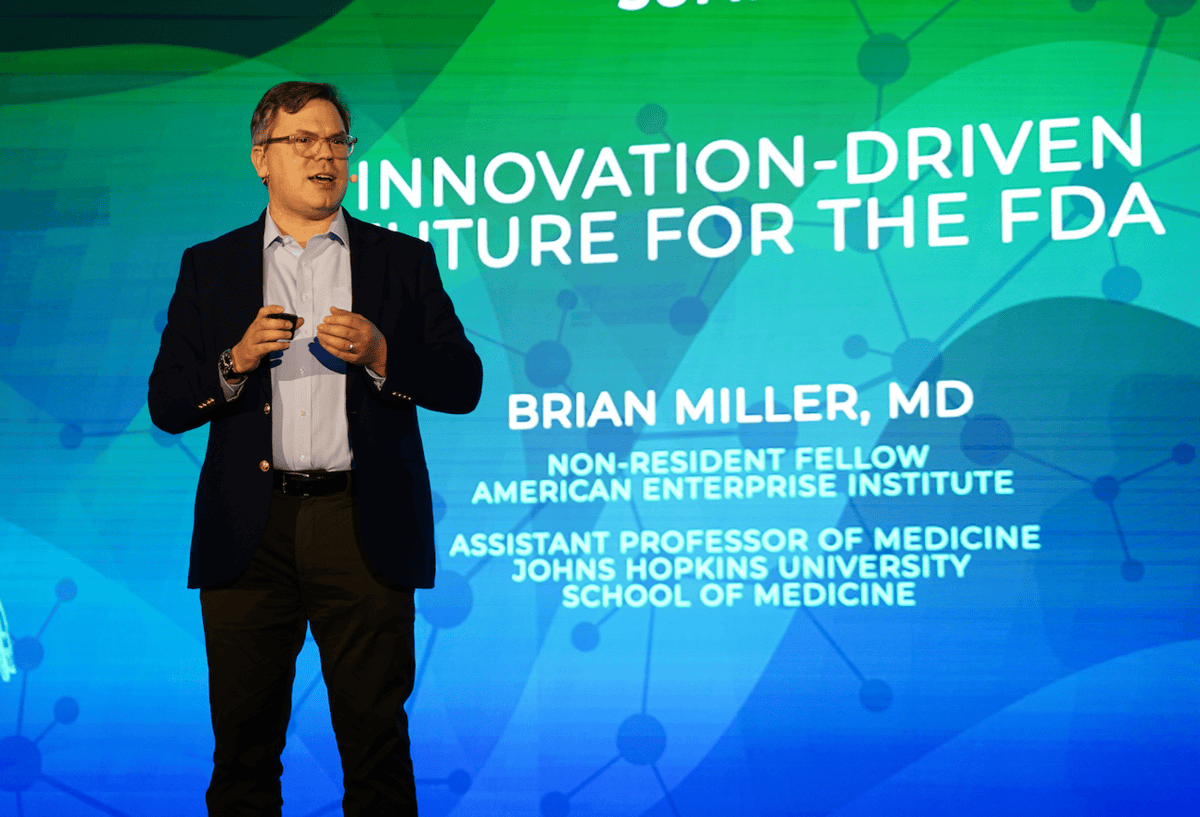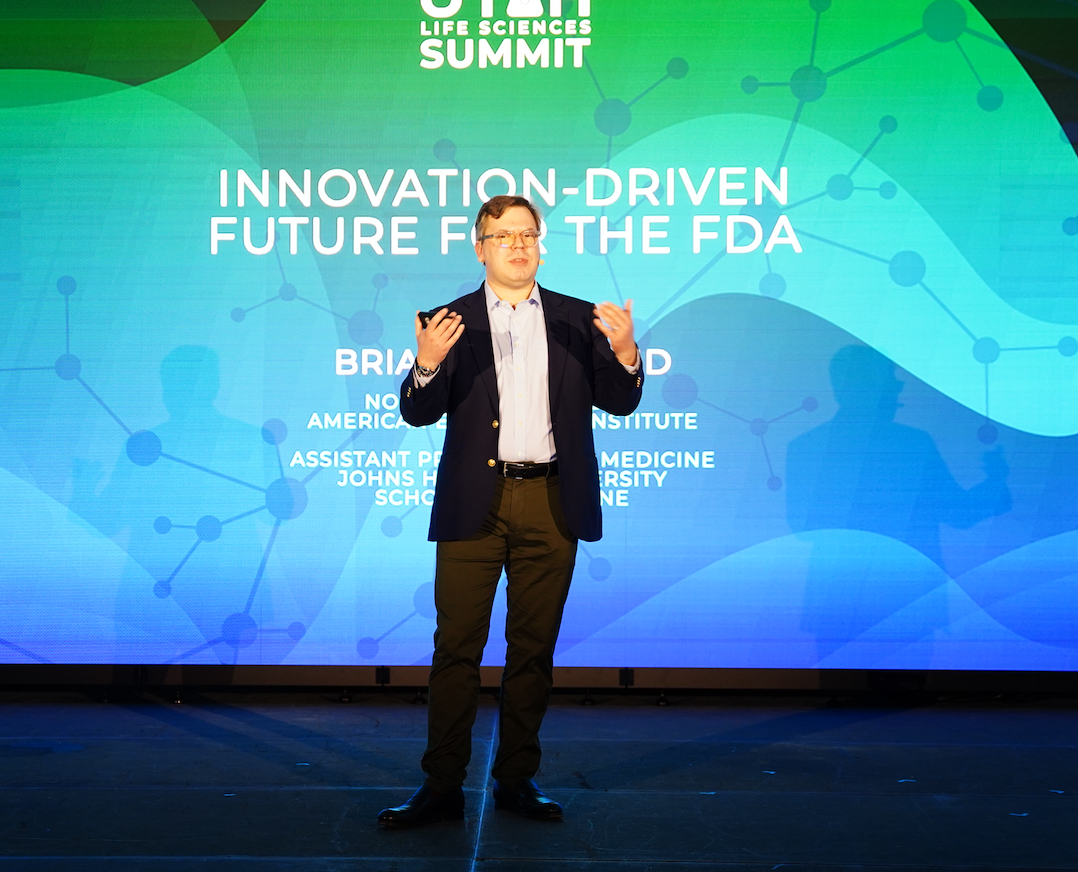

During the 2024 Utah Life Sciences Summit, Dr. Brian J. Miller of the Johns Hopkins School of Medicine, addressed an audience of over 500 of people, including operators within the private sector developing new medical technologies and drugs, their investors, government regulators, students and other parties interested in the life sciences. Of the 30+ sessions at the Summit, Dr. Miller's session had a particular focus on federal agencies. Specifically, he addressed inefficiencies within the FDA and ways to correct them. He pointed to solutions such as automation, software framework integration, internal reorientation, and cultural changes as proposed key drivers for innovation that could and should be applied within government agencies and within the FDA in particular, an agency that could stand to benefit enormously from more efficient, software-based solutions.

“We need to think about how we decentralize regulatory authority, and how we promote personalization, customization, and automation." proclaimed Dr. Miller at the outset of his remarks.
He walked the audience through the size of the problem. “In the US, 30 million people still smoke tobacco. We have challenges with food, obesity, drugs, devices, and diagnostics. If you are a patient in the US, you have lots of functional barriers. Half the patients with heart failure can’t get upstairs. Imagine if you wake up in the morning and you can’t go upstairs in your own house,” remarked Miller.
He continued “Does anyone know the average time for a primary care appointment in the US? I looked it up: 20.6 days. The average time to see a cardiologist is 26 days. So imagine, if you have heart failure, and you're not feeling well, your only option is to wait 26 days to see a cardiologist.”
He set the stage by recounting his experience at the FDA and outlined the ostensible FDA function as setting the clinical standard for drug development. "We use laws, rules, and regulations at the FDA and think we are protecting public health. I say the FDA has a different mission. The FDA's mission should be to facilitate safe and effective innovation for patients. Every drug that I prescribe took years, hundreds of millions of dollars—sometimes billions—and required thousands of people to develop. Everything that I prescribed has an FDA label for the drug.”
Dr. Miller said that the FDA central function is actually much broader. "Whether they realize it or not, the FDA is setting clinical standards, it's setting engineering standards, it's setting surgical standards, it's setting procedural standards, it's setting manufacturing standards." Dr. Miller argued that what the FDA really needs is to be better, faster, and cheaper. There are three things, cultural change, reorientation, and reorganization to make that happen.”

Addressing culture, Miller explained to the audience the broken incentive structure at FDA. “You do not get rewarded if you promote innovation. The culture of the FDA is to go back to tasks, go back to work, to focus on reviewing – 'I must review.’"
Dr. Miller says the FDA needs a fundamental change in attitude and shift from adversary to partner with both big and small companies. He said the FDA should ask drug developers certain fundamental questions: ‘What is it that you're trying to do to change clinical medicine? What is the science and engineering behind what you are doing? How can we help you get there?
Speaking of reorientation and reorganization, Miller explained that highly trained MDs, medical officers are using much of their time to perform menial tasks that consume most of their time and thereby remove the possibility for the spark of innovation. “When you're an FDA reviewer, you are doing basic tasks—constructing tables, constructing tables of tables, calculating mean, median, and mode. Does that help create innovation?" He said much of these tasks can and should be automated using software solutions, especially the first layer of review. He argued that software can help FDA promote standardization and automation while freeing up valuable, well-trained talent to work more closely with drug developers. "After that first layer of review, the reviewer will then have time to actually have a phone call with the company that has invented a new drug on a specific question to move the review process more quickly. If you are a drug company developing new products, you have critical questions for which you cannot wait three critical months,” said Dr. Miller.
Dr. Miller said at FDA There are two roles that have power incentives: one is the reviewer, the other is the center director. The problem is that there are six to seven layers of administrators between them. Heavy middle management is a major problem at FDA. The FDA must remove those layers of management and return that staff back to serving the customer.”
Dr. Miller laments that FDA reviewers do not see patients anymore, leading to a disconnect between the procedural work and the end goal. Although possessing vast knowledge, most of these reviewers have been out of hands-on practice for ten to twenty years. Consequently, in the pursuit of innovation, one can easily “trip over” the thousands of rules and ranks.
One novel idea, Miller argues, is to look at other models in the private sector. “If you look at Google, Amazon or Meta, they're retraining their models constantly to make them specific to geographics and demographics. The reason they are good is because they apply continuous development and geographic fine tuning. For remote patient monitoring, if the flu is detected in the population, the models' performance needs to be trained on specific areas and populations. What may work in Utah may not work as well in Queens, New York.
Dr. Miller concluded, “At the end of the day, it's the patient who can't walk upstairs, the patient who has the rare disease for which that patient has no treatment, the patient with a spinal cord injury who wants to walk again—those are the people who need innovation from the FDA. Every day that we do not have innovation is a day that the patient doesn't have access to life-changing outcomes.”


